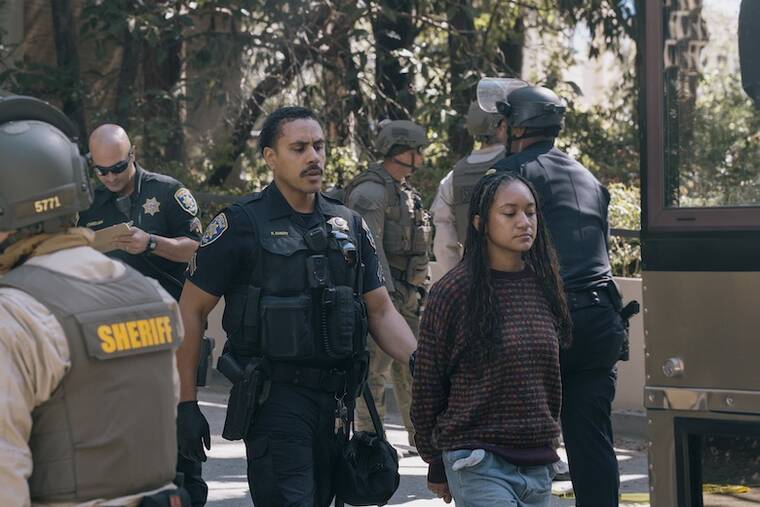More pro-Palestinian protesters arrested at UCLA

MARK ABRAMSON/THE NEW YORK TIMES
During continued student activism over the war in Gaza, a demonstrator is detained and taken aboard a L.A. Sheriff’s Department bus, on UCLA’s campus in Los Angeles. Campus officials said 43 protesters were arrested and charged with conspiracy to attempt burglary; the university sent a message telling students and faculty to avoid Moore Hall and switch to remote classes.

MARK ABRAMSON/THE NEW YORK TIMES
Some of the 30 or so protesters, part of a wave of student activism over the war in Gaza, attempted a sit-in at a parking garage on the UCLA campus before being arrested, in Los Angeles. Campus officials said 43 protesters were arrested and charged with conspiracy to attempt burglary; the university sent a message telling students and faculty to avoid Moore Hall and switch to remote classes.


LOS ANGELES >> More demonstrators were arrested Monday as classes resumed at UCLA, the site of some of the tensest moments during a wave of student activism at U.S. universities over the war in the Gaza Strip.
Lt. Richard Davis of the UCLA campus police said the protesters arrested in a campus parking deck were charged with conspiracy to attempt burglary. A UCLA spokesperson later said that 44 people had been taken into custody.
The arrests came as pro-Palestinian demonstrators attempted a sit-in at Moore Hall, student organizers said. About 30 protesters were sitting in a corner of the parking deck around 9:45 a.m. local time, with their hands zip tied behind them. They were later taken to a sheriff’s bus.
The university sent a message telling students and faculty members to avoid Moore Hall and switched to remote classes.
Another group of demonstrators amassed in nearby Dodd Hall, where about 40 were inside Monday morning, chanting, “Disclose, divest, we will not stop, we will not rest.” They later moved outdoors to Bruin Plaza near the center of campus, where about 150 protesters had gathered by late morning.
UCLA administrators originally took a tolerant approach to a pro-Palestinian encampment at the school, even as student protesters were arrested across the nation. But the peace was shattered late Tuesday: Videos analyzed by The New York Times showed pro-Israeli counterprotesters attacking students in the encampment, beating them with sticks, using chemical sprays and launching fireworks as weapons.
Don't miss out on what's happening!
Stay in touch with breaking news, as it happens, conveniently in your email inbox. It's FREE!
No arrests have been made in connection with the attack, which police allowed to continue for hours without intervention. But on Thursday, police officers from three law enforcement agencies arrested more than 200 pro-Palestinian demonstrators and dismantled their camp.
The university said Sunday that it had created a new campus safety position as it examines what led to clashes between demonstrators there.
This article originally appeared in The New York Times Opens in a new tab.
© 2024 The New York Times Company



